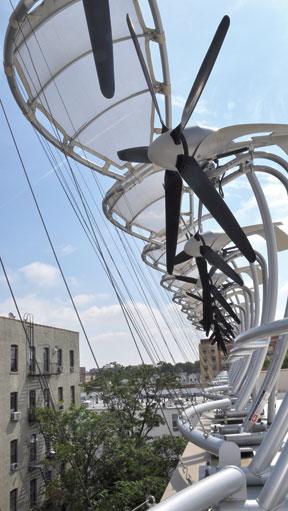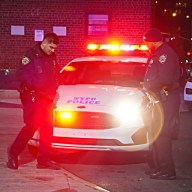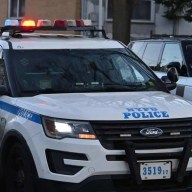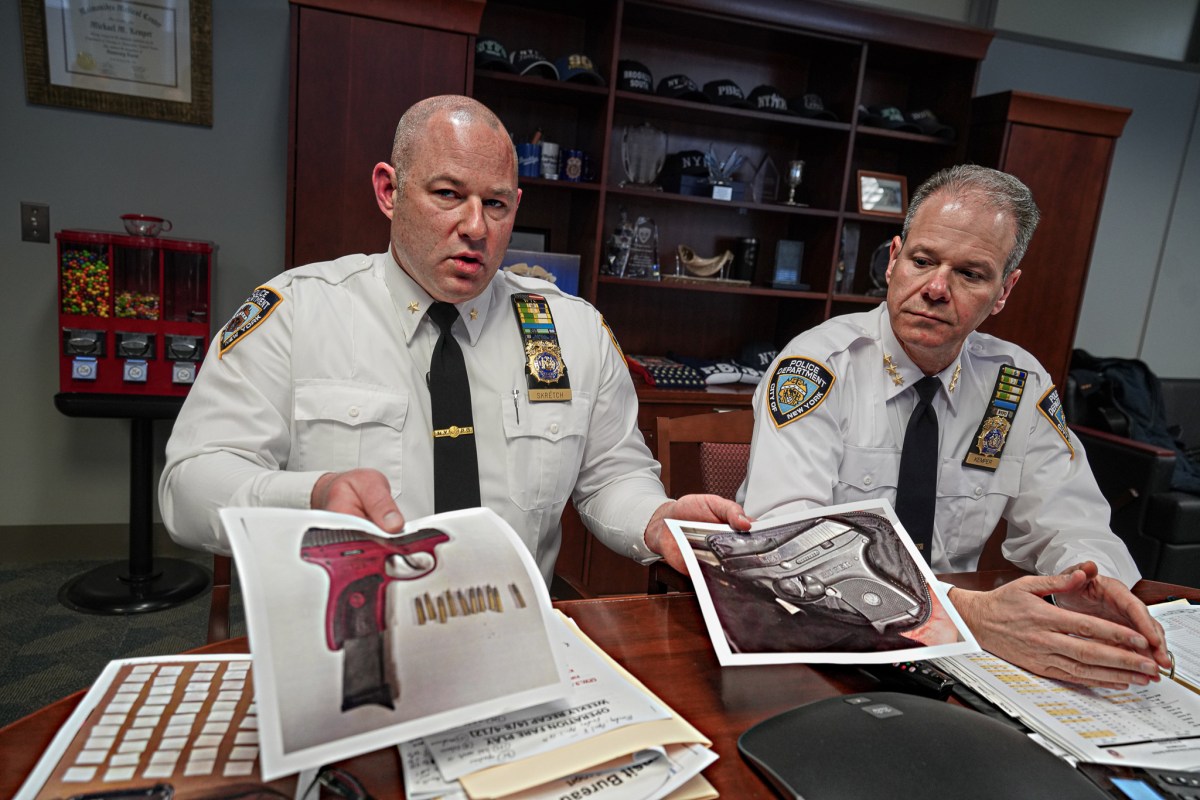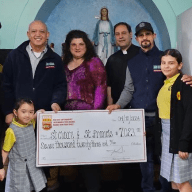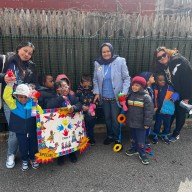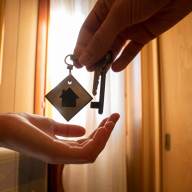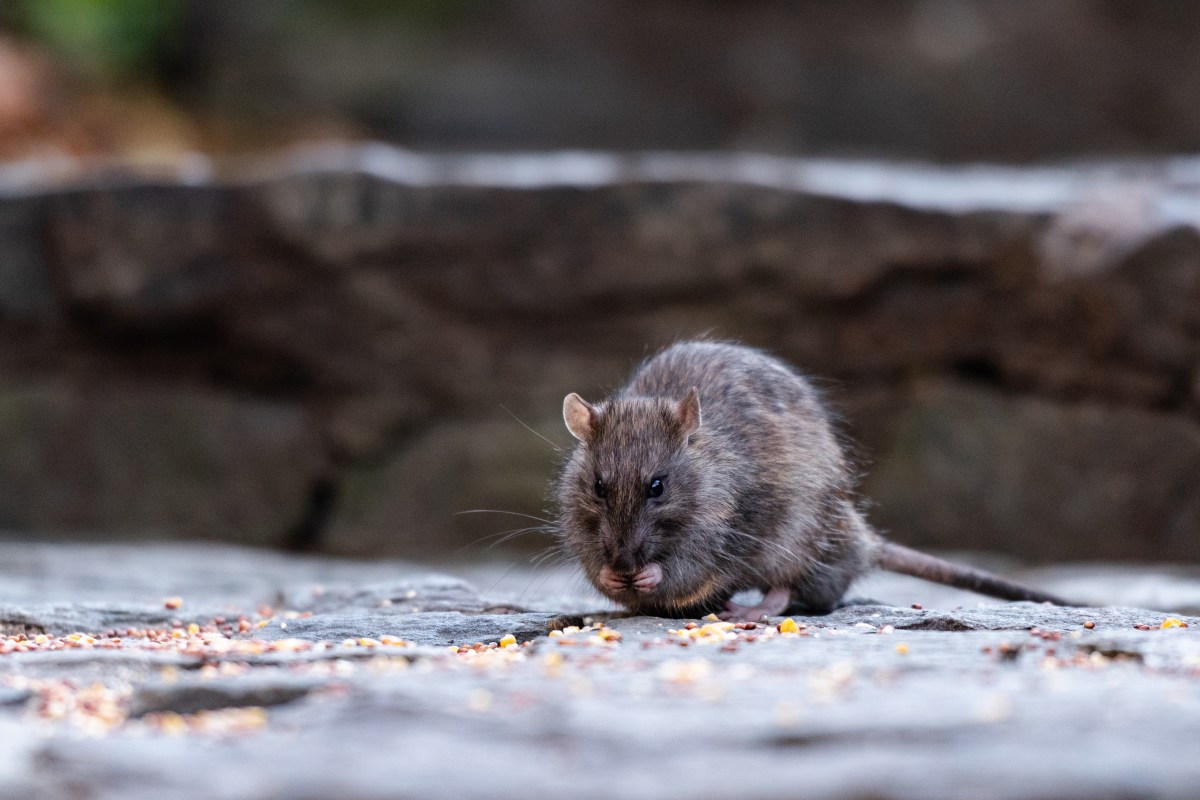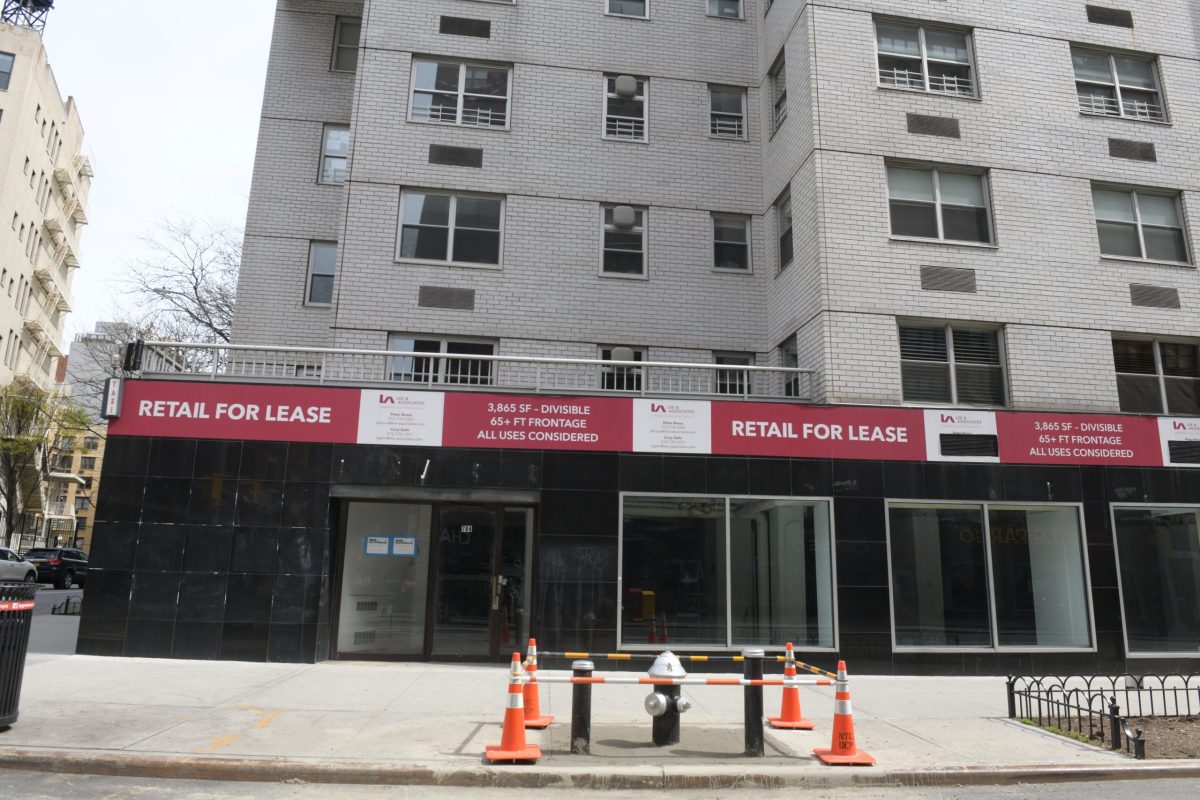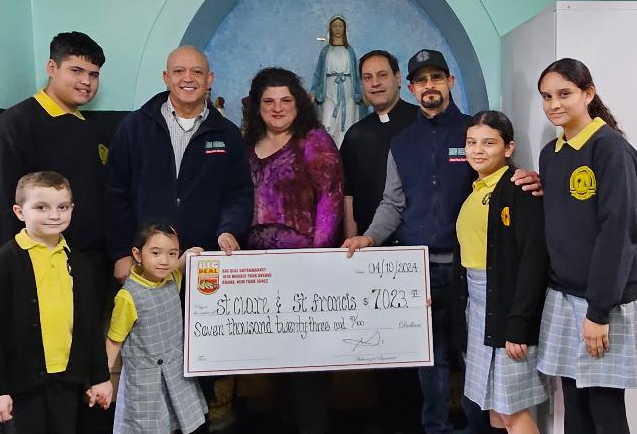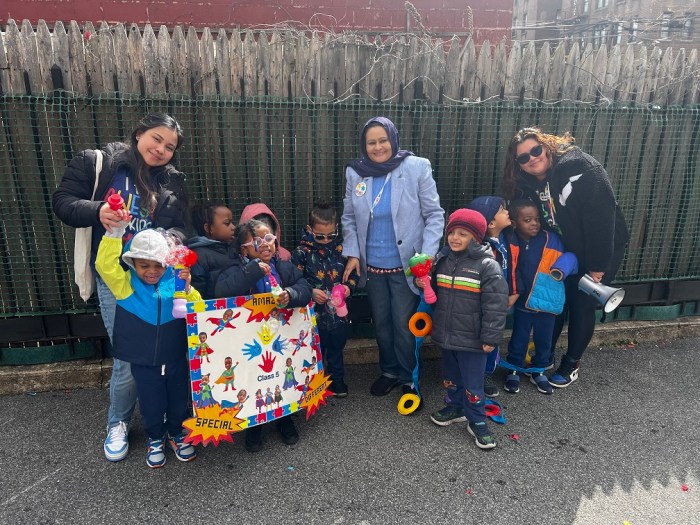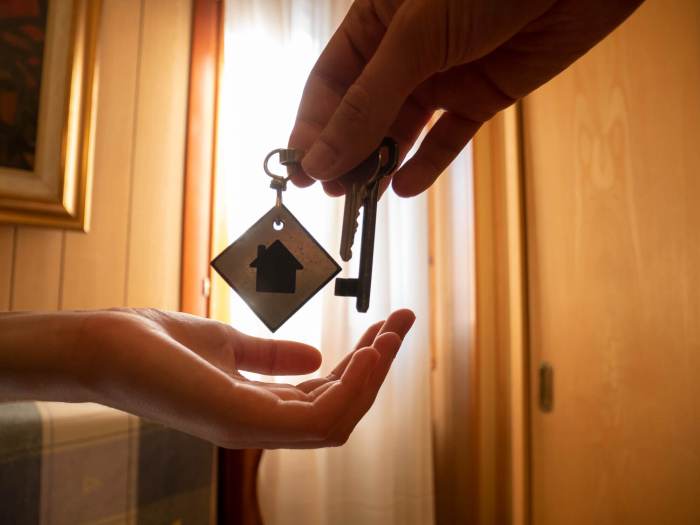When developer Les Bluestone last visited El Tona in Melrose, an older woman from the community asked about the propeller blades fitted like gargoyles to the new apartment building. Had Bluestone added the blades to set a breeze down sweltering E. 156th Street?
The developer laughed. The blades power ten wind turbines that Bluestone thinks will conserve energy and money. The El Tona turbines are an experiment; whether Bluestone succeeds on E. 156th Street or not, other developers are sure to follow.
“Wind power is something we wanted to try out,” Bluestone said. “We only do ‘green buildings.’ We’ll know in a year whether it works or not.”
El Tona is a low-income rental building funded by the Department of Housing Preservation of Development, the Housing Development Corporation and the state Division of Housing and Community Renewal. At 63 units and five stories, El Tona is smaller than other Melrose developments, the 600-unit St. Ann’s Terrace, for example.
The $17 million building, on E. 156th between Melrose and Elton avenues, is complete; Bluestone has signed a handful of leases. There will be 13 units reserved for those formerly-homeless. It used to be a vacant lot – half car park, half community garden. The city paid to relocate the garden to the end of the block.
“It was one of the last missing teeth in Melrose,” Bluestone said. “When we started to build here in 2001, the community looked like Dresden, Germany. It looked like someone had dropped bombs. It looked like: building, dirt, dirt, dirt, building.”
The wind turbines, shipped from California, are six feet wide and eight feet tall. They start to generate power when the wind on E. 156th Street reaches four m.p.h. On a windy day, the ten turbines should power the common area lights and fans at El Tona. In the Bronx, the wind is strongest at night, Bluestone said.
El Tona boasts other green aspects. Two generators in the basement produce electricity; heat from the generators is used to boil hot water for the building. El Tona will probably earn a LEED Platinum rating for environmental-friendly design, the largest low-income development designated as such in the nation.
Bluestone was required to offer apartments first to residents of Community Board 1. He wants to rent 50 percent of El Tona’s units to CB 1 residents. But too few eligible CB 1 residents have applied but 2,400 others have.
The building will be 100 percent nonsmoking, Bluestone said. Residents will participate in a Mt. Sinai School of Medicine study to determine the power of a “green” building to rein in asthma.

